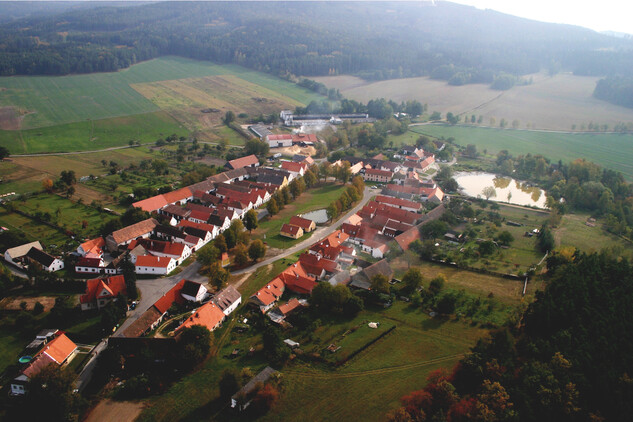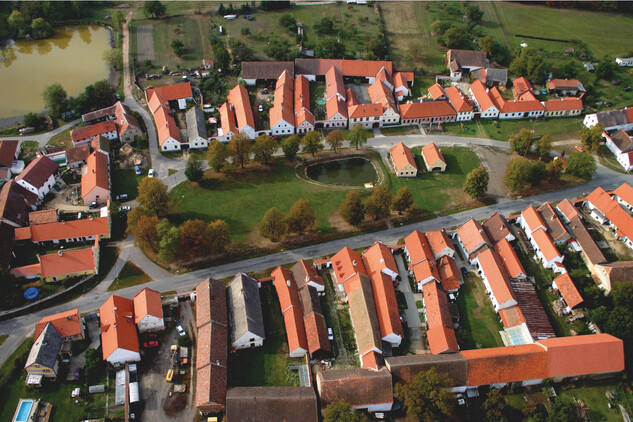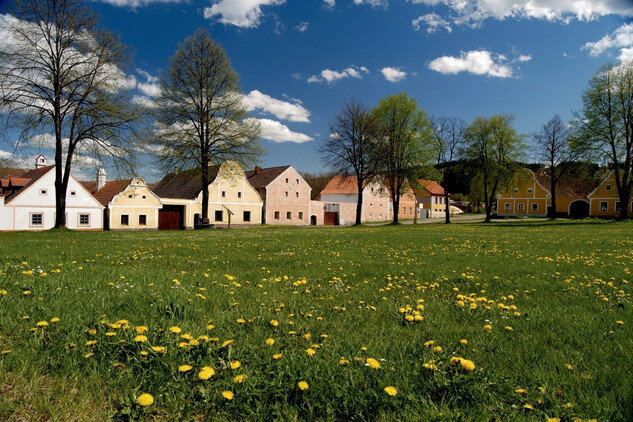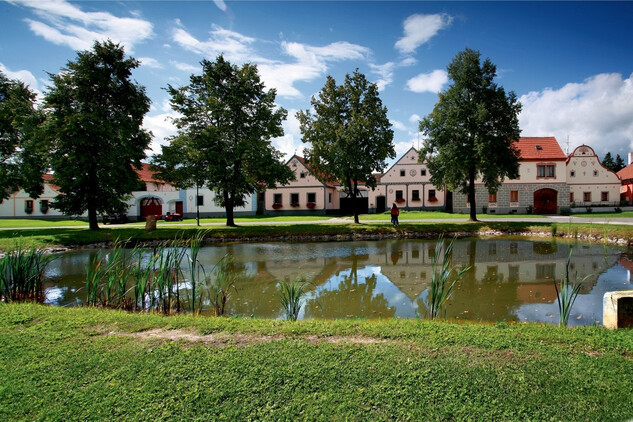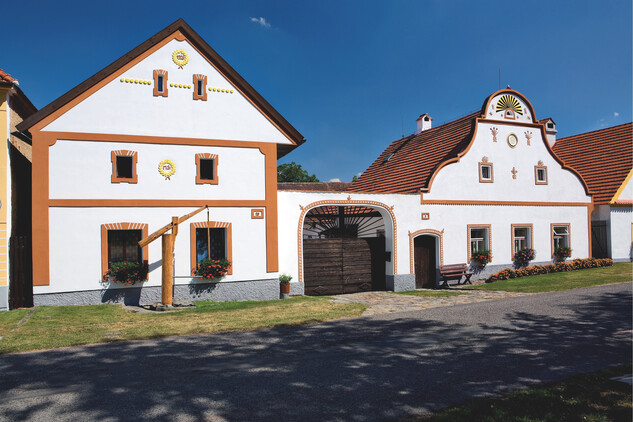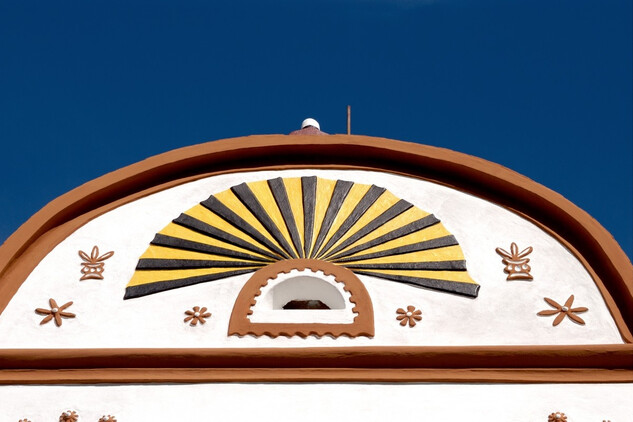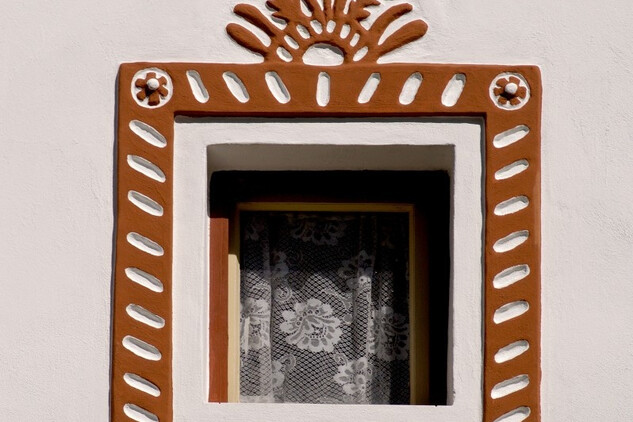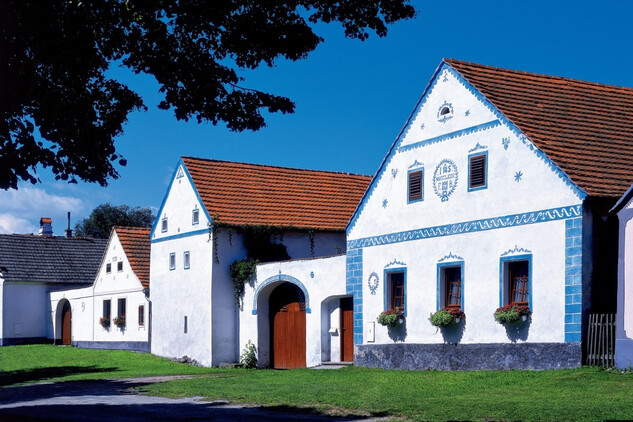Holašovice Historic Village
Holašovice is an exceptionally complete and well-preserved example of a traditional central European village. It has a large number of outstanding 18th- and 19th-century vernacular buildings in a style known as "South Bohemian folk Baroque", and preserves a ground plan dating from the Middle Ages.
The village was first mentioned in the mid-13th century during the period of the colonising movements in the South Bohemian border region. The town has experienced two crippling blows over the years. The first was in the 16th century, when almost all of the original Czech inhabitants of the village were wiped out through plague, following which it was almost immediately occupied by German settlers. The Second World War dealt another blow when the attempts made by the German inhabitants to join the village to the Reich were successful. After the war, in 1946, the enforced withdrawal began which affected the majority of the German inhabitants. The empty buildings were then inhabited by Czechs from the inland, who built very little here, with just some repairs and maintenance being carried out. This meant that in 1998 the almost entirely preserved medieval system of houses and grain stores was inscribed in the UNESCO World Cultural Heritage List.
